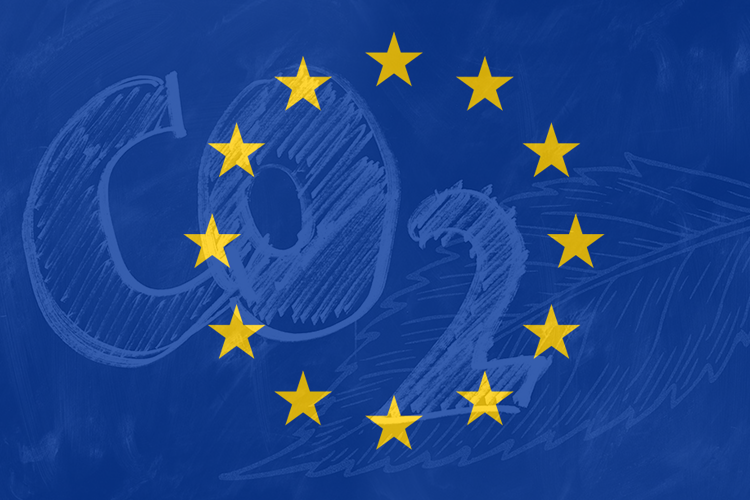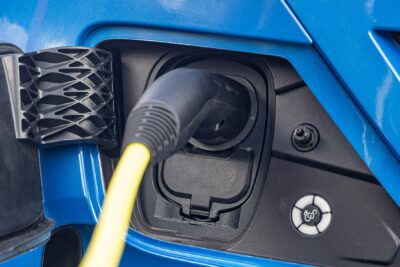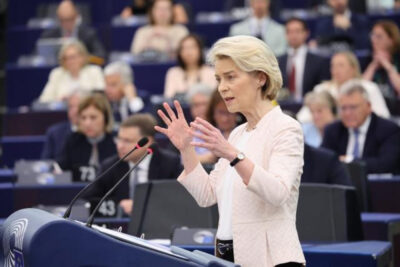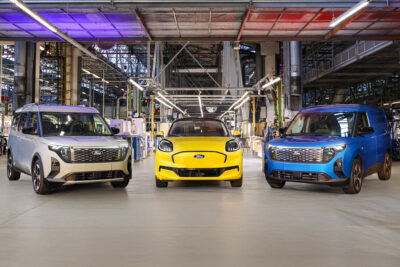EU Council confirms ICE ban for cars and vans by 2035
Late last night in Luxembourg, the European Council of Environmental Ministers agreed to raise the targets for reducing CO2 emissions for new cars and new vans by 2030 to 55% instead 50% for cars and 50% for vans. The Council also stood firm on the ICE ban in 2035 – but left a back door open.
Then, after almost 16 hours of debate and breaks, the EU Environment ministers of the EU countries voted in favour of reducing fleet limits for cars to zero by 2035 – meaning that new passenger cars and light commercial vehicles may no longer have any tailpipe emissions, which is de facto equivalent to a ban on internal combustion engines.
That it took so long could have surprised some since the Ministers were to decide something that was essentially already the EU Climate Law. Or, almost. Otherwise known as Fit for 55, introduced by the EU Commission in 2021, the package includes measures to reduce greenhouse gas emissions by 55% by 2030 and climate neutrality by 2050. The Emission Trading Scheme ETS and the phase-out of internal combustion engine vehicles were some of the most vital and disputed policies.
Note also that the EU Parliament had cleared the way for the phasing out of internal combustion engines in new passenger cars and light commercial vehicles from 2035 on 9 June. The Parliament’s position for the negotiations with the EU Member States was thus clear – a fact the French Council Presidency reminded the gathered ministers of when grasping for compromise in Luxembourg last night.
However, it wasn’t to be that easy. The vote of the environment ministers was not quite as proposed by the EU Commission in its Fit for 55 program. At the insistence of Germany and other EU member states, the agreement now includes the possibility that internal combustion vehicles powered exclusively by e-fuels can be registered after 2035 – the EU Commission is to submit proposals on how an exception might look like.
Therefore, such a backdoor for e-fuels has not yet been decided, and in the negotiations, the dispute over synthetic fuels could not prevent agreement in principle. In the next step, the EU countries still have to negotiate their position with the EU Parliament – which, in contrast to the countries, has spoken out in favour of a “hard” phase-out of internal combustion engines without e-fuels. So changes are still possible.
Reactions after the decision
Regardless of any possible back doors, proponents of the ICE reacted jubilantly. It was a particular victory for the French Presidency in the Council as well, which had a moved to put several files together instead of discussing every measure separately.
The French delegation took to Twitter after the decision got through the Council.
📌#FitFor55 | Revision of the regulation on CO2 emission performance standards for cars and vans.
➡️From 2035, new passenger cars and for new light commercial vehicles placed on the EU’s market have to be zero-emission vehicles. #EU2022FR #ENVI
— Présidence française du Conseil de l’UE 🇫🇷🇪🇺 (@Europe2022FR) June 29, 2022
Also, the German Minister for the Environment Steffi Lemke, together with a tired-looking Robert Habeck, made a tweet. Lemke called the decision “An enormous step forward and a historic result.”
#Fitfor55: “Groundbreaking decisions for climate action and climate neutrality” were taken in the 🇪🇺 Environment Council today! 👏 @BMUV Minister @SteffiLemke and @BMWK Minister Robert #Habeck on the @EUCouncil reaching a “very broad majority” for a general approach: 👇 pic.twitter.com/dkJu95cCAw
— Germany in the EU (@germanyintheeu) June 29, 2022
This, however, came after the German delegation had de facto delayed the process and proved instrumental in pressing for that backdoor. The matter would have been straightforward if it sided with the climate protectionists. It is also what the Greens have wanted all along.
However, they are just one part of Germany’s new coalition government alongside the social democrats (SPD) and the liberal party, FDP. They had been entertaining ideas of alternative fuels, or “E-Fuels”, and helped a develop a toxic melange that had Germany wavering. The FDP went as far as denying their yes, if alternative fuels would not be given room. The Greens had also hoped in vain for Chancellor Olaf Scholz to put his foot down; instead, he appeared to side with the FDP.
The German wavering had also previously encouraged other member states to raise their concerns, some going as far as asking for hybrids to be put back on the agenda of “climate-friendly” vehicles. The issue was that if Germany would abstain from its vote in the EU Council of Ministers – which it had to do if the coalition would not agree on a joint position – countries also opposing the ban could gain the required majority to water down the incoming regulation on transport decarbonisation as reported.
Countries siding with Germany were Italy, with the support of Portugal, Bulgaria, Romania and Slovakia, which had issued a position paper demanding that CO2 emissions from new cars be reduced by only 90 instead of 100 per cent by 2035. According to these countries, 100 per cent should only apply in 2040.
Slovakia, for example, suggested a review of targets in 2028. The countries further argued they needed more time to install the charging infrastructure and, given the extra expense of an electric vehicle, would help with the cost of living crisis.
Poland and Hungary were similarly against the 2035 ban, with Poland saying neither the market nor consumers were ready for the jump to electric vehicles. Also, Hungary jumped in on Tuesday, supporting the German proposal of including “carbon-neutral” fuels.
Then, in the afternoon, Germany’s governing parties found a joint position. The Welt paper quoted the proposal for compromise first: the coalition would agree to the European Commission’s bill to only allow cars that emit no CO2 during operation from 2035. This is the de facto ban on internal combustion engines. At the same time, however, “the EU member states would instruct the European Commission to make new proposals on how cars and light commercial vehicles that run on synthetic fuels could still be registered after 2035” – and we now know they got through with it, at least on paper.
Synthesising compromise
Against the diluters, there were strong proponents eager to reach an agreement in Luxembourg. “We have many difficulties as they stand, but we are prepared to accept the texts as they are today,” Sweden and Spain said.
Other member states also repeated demands for an even sooner phase-out date. The Netherlands took a strong position saying, “We cannot accept any watering down. The bare minimum is on the table, and I must insist here.”
Denmark, too proposed an earlier phase-out by 2030 and wants to leave it to the member states to decide at the national level.
Now it remains to be seen how the EU Commission may deal with any E-Fuel proposal. As things stand, however, the ICE ban is underway with carmakers already on board. Take Volkswagen, for example, gearing up for 2035 or Audi in 2026.
European Emission Trading Scheme
On a broader climate level, the regulations decided late yesterday evening included a common position on the EU emissions trading system (EU ETS). This trading system is a carbon market based on a cap-and-trade emission allowances system for energy-intensive industries and the power generating sector. For these sectors covered by the EU ETS, the Council agreed to keep the overall ambition of a 61% reduction in emissions by 2030.
The European Council have been able to agree on creating a new, separate emissions trading system for road transport sectors (as well as for the building sector). This primarily concerns distributors supplying fuels for the road transport sector. In comparison to what the EU Commission proposed – which was the auctioning of allowances from 2027 onwards and surrender from 2028 onwards – the start of the auctioning and surrender obligations will be delayed by one year.
Aviation and Maritime sectors in focus
Apart from the clear boundaries for emissions mentioned above for cars and vans, the aviation and maritime sectors have been included. The aviation sector will have to gradually phase out free emission allowances by 2027 and must align with the global Carbon Offsetting and Reduction Scheme for International Aviation (CORSIA). In terms of emissions trading, the EU ETS will be applied for flights within Europe, including the UK and Switzerland. For flights to and from third countries participating in CORSIA, EU operators must adhere to CORSIA guidelines. For the phased-out free allowances by 2027, the Council agreed to set aside 20 million of these for the extra costs associated with SAFs – so-called sustainable aviation fuels. The agreement decided last night considers those areas with specific geographical circumstances and proposes limited transitional derogations.
The Council agreed to include the maritime shipping sector in the EU ETS. Generally, this consists of the gradual surrendering of allowances for shipping companies. Since the naval transport sectors are more important in some areas, member states dependent on maritime transport will be compensated with the redistribution of 3.5% of the ceiling of the actioned allowances. The general approach is to consider geographical specificities with transitional measures for journeys relating to public services, small islands and winter navigation. An additional effort will be made to combat the risk of carbon leakage in the maritime sector.
What are the next steps?
Since the Council has now agreed on its positions on the proposals, the next step will involve negotiations with the European Parliament to reach an agreement on the final legal texts.
In 2026, the Commission will assess the progress towards achieving the 100% emission reduction targets and the need to review these targets considering technological developments, including plug-in hybrid technologies and the importance of a viable and socially equitable transition towards zero emissions.
Including reporting by Nora Manthey.
consilium.europa.eu, consilium.europa.eu (the session in Council), welt.de (German proposal)





2 Comments